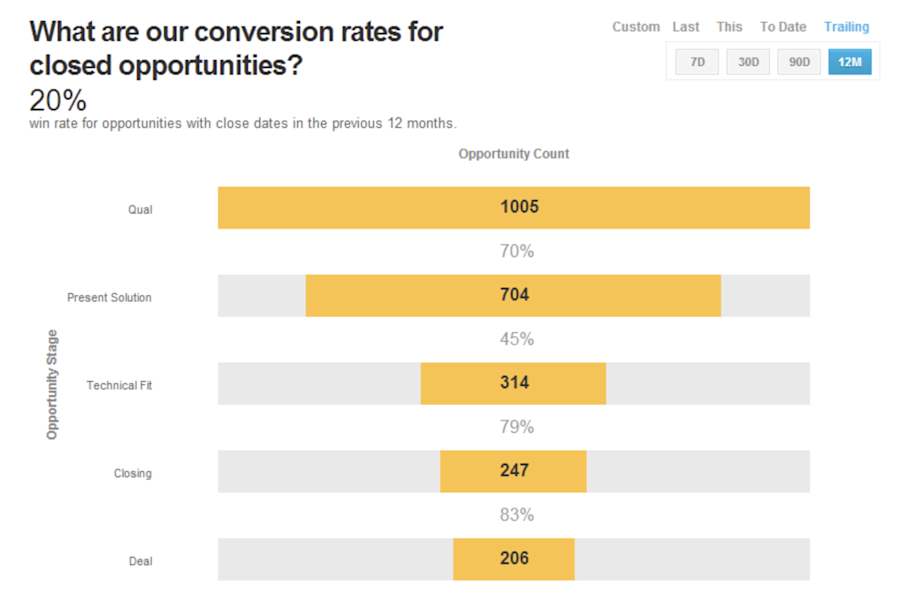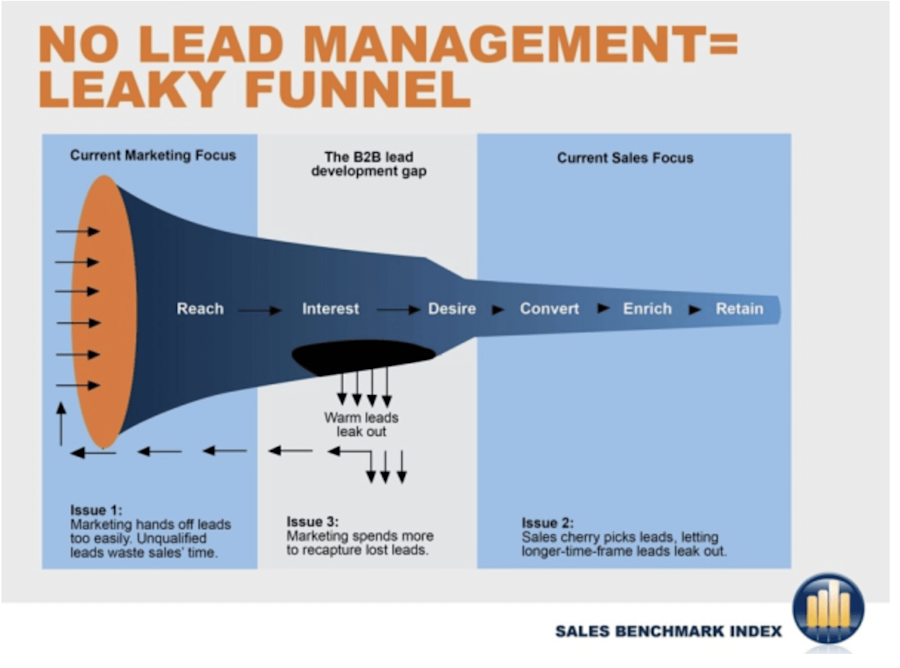Despite good intentions there are still many loopholes in lead management that undercut sales performance. That’s why having a solid lead management process in place can save lead generation programs from the chopping block.
I was lucky enough to catch up with a few sales and marketing leaders recently from companies like LeadGenius, Socedo and Metadata, to learn more about how their teams develop a sales pipeline with lead management best practices.
A good lead management process includes a warm hand-off to sales
Gil Allouche, CEO at Metadata.io said they have a process for all inbound leads that includes enriching each lead with demographics, technology stack, marketing data, and sorting by alphabet and assigning leads to sales development team members.
Receiving leads from marketing already enriched can be valuable to sales teams since leads can then be qualified based on additional criteria, such as location or company size. It also helps sales team members frame the conversation on outreach.
In the case of Metadata, Gil says that qualified leads get a phone call from sales within 30 minutes of submitting a form on their website, and if there is no response after a series of calls and emails, leads are then put into an email nurture sequence.
Much of lead management is defining the hand-off to sales. Leads may not enter the sales pipeline right away depending on how and where the lead converts.
In the case of Socedo, Aseem Badshah, Founder & CEO, explained that they convert leads from gated content or trial signups. They also generate new leads from monitoring Twitter via their app. Leads from all their marketing sources feed into Marketo where they can then be scored and nurtured and passed to sales development when the lead is ready to have a sales conversation.
Generally the goal is to qualify leads as much as possible in marketing or marketing operations, this improves connect rates and increases performance in sales.
Define lead criteria
This is an easy one but oftentimes it is overlooked because team members assume there is a ‘good enough’ understanding of lead qualification.
William Wickey, Head of Content & Media Strategy at LeadGenius says their sales pipeline fits the following workflow:
Pre-Qualified
Prospect
Demo Scheduled
Evaluation
Proposal
Committed
Closed Won
“With this general workflow in mind, lead stage definitions and process can differ based on company size and product path. Clearly defining lifecycle stage definitions is the key to routing and building good workflows,” said William.
Both sales and marketing teams should have shared definitions of each stage of the sales pipeline.
At Leadfeeder, we don’t have marketing qualified leads (MQLs). In lieu of the consideration stage lead we qualify inbound leads based on how many companies we identify on their website when they sign up to use Leadfeeder. We then enrich that data to get a customer profile.
For us, any lead that has more than 20 companies a month visiting their website is a sales qualified lead (SQL).
If both sales and marketing teams share a definition of each lead stage there isn’t any question about sales pipeline contribution and expectation. It then makes it easier to know where marketing drops off and sales picks up.
Most organizations will enrich leads to backfill qualitative and quantitative company and contact information. Using tools like FullContact or ReachForce make it simple to round out a lead profile so that sales or marketing can score leads based on more than conversion activity.
Lead Management needs to be owned
Most of lead management needs to be owned by a department or group of individuals. Usually the department that is closest to the customer is best equipped to determine lead management workflows, and this is usually done in collaboration with management or the executive team.
In a typical organization, sales or marketing operations makes sure that there is visibility into the sales funnel, which visually communicates the progression of leads at various stages of the sales pipeline.

Source: http://www.insightsquared.com/2012/10/introduction-to-sales-funnel-reports/
William at LeadGenius says that sales operations owns lead management at LeadGenius since they know what’s effective. For example, if sales development wants to make 120 calls a day as opposed to sending personalized emails then they are given that flexibility.
“Management insists on data-driven decisions and experimentation that prove successful at least 20% of the time,” says William.
For companies that are focused on generating inbound leads, the marketing department will typically push lead management initiatives forward since they control lead generation initiatives. On the other hand, sales-focused companies will develop a lead management process based on sales tactics, sending emails or making cold calls.
Sales and marketing tools also provide a layer of complexity with ownership of lead management. If sales is working in CRM and marketing is working in a marketing automation tool there isn’t a ton of visibility into what’s happening in the sales pipeline.
Why should visibility matter if marketing is performing okay and sales is hitting their numbers?
Because usually somewhere along the way, someone in the organization will point out a hiccup, such as the fact that marketing is spending $500,000 a year on Adwords but only seeing a 30% return. Or that sales isn’t contacting every lead that marketing is handing off.
At that point there is a deeper dive into what’s going on with marketing channel performance, and that’s when having complete alignment of a business goal between teams really matters.
Make sure sales and marketing have the same measure of success
If marketing has a marketing qualified lead (MQL) goal and sales has a sales lead or revenue goal, there is already bias and inefficiency with lead management. To streamline the lead management process both teams should work towards the same measure of success.
A shared revenue goal is the only measure of success that I have seen work for B2B sales and marketing teams.
If marketing is too focused on rushing the hand-off because they want to fill the top of the sales funnel faster, then warm leads “leak out”.

Source: https://salesbenchmarkindex.com/insights/generate-25-of-sales-pipeline-opportunities-from-marketing/
When marketing’s goal is revenue-driven then they are incentivized to generate qualified sales leads, which in turn keeps their focus on marketing tactics that add new business. Too much focus on lead generation doesn’t align sales with marketing.
To recap, a lead management process should include:
A warm hand-off to sales
Defined lead criteria
Ownership
Same measure of success between marketing and sales
With these lead management pillars in place, marketing teams will be more effective with lead generation and sales will be more efficient in driving revenue.
Now that you're here
Leadfeeder is a tool that shows you companies that visit your website. Leadfeeder generates new leads, offers insight on your customers and can help you increase your marketing ROI.
If you liked this blog post, you'll probably love Leadfeeder, too.
Sign up



